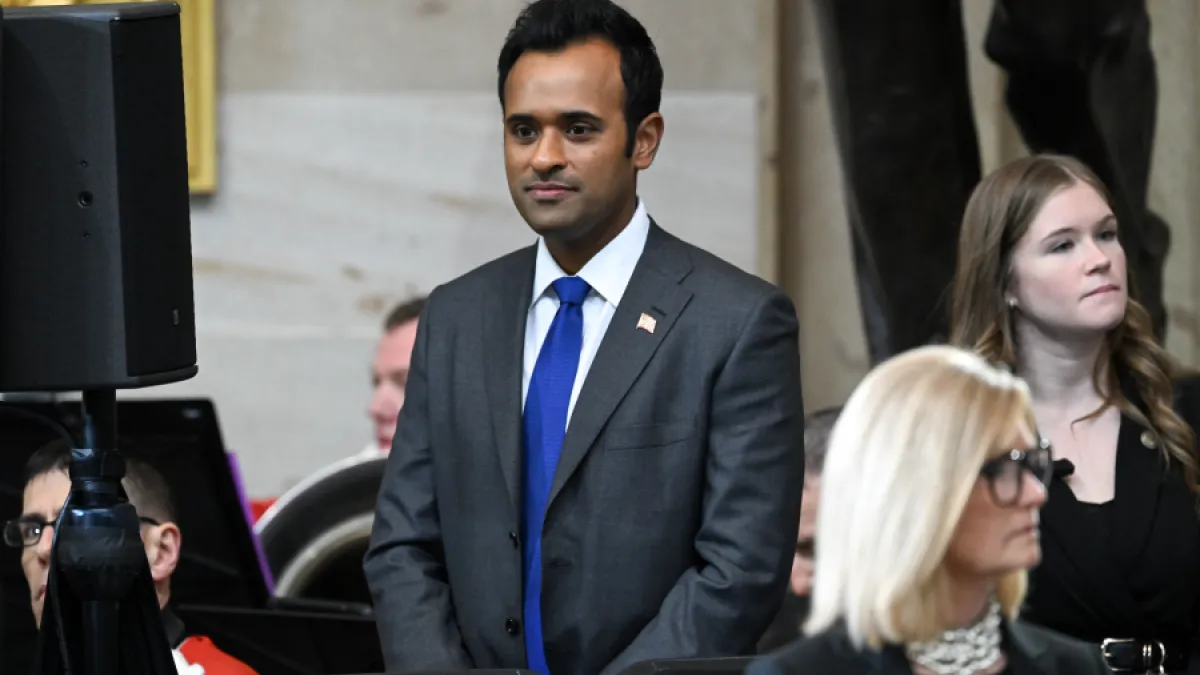
President Trump created a version of the much-anticipated Department of Government Efficiency on Monday, signing an executive order that tasks the new entity with implementing “the President’s DOGE Agenda.”
The initiative is not a new government department, however, but rather a new name for the United States Digital Service, an existing office within the executive branch. The USDS was founded in 2014 under former President Barack Obama to help improve technology infrastructure and services throughout the federal government. More recently, USDS engineers have worked on the IRS's Free File effort and on improving the Social Security Administration's website.
Within the United States DOGE Service, as the USDS is now known, the executive order authorizes the administrator, who will report to the White House chief of staff, to create “the U.S. DOGE Service Temporary Organization,” which will expire on July 4, 2026, after 18 months of operation.
The executive order calls on agency heads in the federal government to create “DOGE Teams” with at least four members tasked with implementing the president’s “DOGE Agenda.” The typical structure of the four-man teams is defined as “one DOGE Team Lead, one engineer, one human resources specialist, and one attorney,” and the order makes it clear that the teams can include “Special Government Employees” — temporary employees who can work for the government for 130 days within a 365-day period. Executives from the private sector may join the initiative on that basis.
The order provides little detail on what the DOGE teams will be doing, and the few concrete references to specific areas of focus for the effort involve technology. The order says the DOGE agenda will be implemented “by modernizing Federal technology and software to maximize governmental efficiency and productivity.”
An early shakeup: Trump first discussed DOGE in November, when he called on Tesla CEO Elon Musk and pharmaceutical entrepreneur Vivek Ramaswamy to lead an initiative to aggressively reduce waste and inefficiency in the federal government. Musk boasted that he could cut $2 trillion per year from the more than $6 trillion budget but has recently walked that back by half, even as many analysts express doubt about getting anywhere close to either figure.
It’s not clear if Musk will have a formal position within DOGE, though he is referred to as its leader and The New York Times reports that he may be given an office in the West Wing. Ramaswamy, on the other hand, clarified his position this week, when he announced he is stepping down from DOGE, amid speculation that he plans to run for governor of Ohio. Politico reports that Ramaswamy had fallen out of favor with both Trump and Musk, in part due to a rant he delivered on social media about the inferiority of American workers and the need for more H-1B visas for foreign engineers. “Everyone wants him out of Mar-a-Lago, out of D.C.,” a Republican adviser told Politico.
Legal challenges: As expected, DOGE was hit with multiple lawsuits as soon as Trump took office. The suits question the effort’s legal status and charge that it violates federal law by empowering private individuals to influence the shape and scope of public agencies.
“Currently, DOGE is operating unchecked, without authorization or funding from Congress and is led by unelected billionaires who are not representative of ordinary Americans,” said Citizens for Responsibility and Ethics in Washington, one of the groups filing suit. CREW said there are clear requirements for federal advisory committees, which DOGE is failing to meet, making it impossible for the public “to hold it accountable for the sweeping changes its unelected and unaccountable leaders plan to make.”
Trump’s executive order, however, may complicate the issue, since it establishes DOGE within the executive branch rather than as an independent advisory committee or new department, potentially shielding the initiative from certain oversight requirements and limitations.